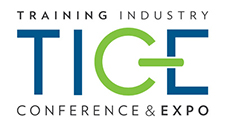d'Vinci Interactive is an award-winning comprehensive learning solutions provider for corporate, government, medical, non-profit, and K-12 target markets.
State of the Training Industry
November 25, 2019
A Conversation with Ken Taylor, President, Training Industry
At the recent Training Industry Conference & Expo, I had the opportunity to talk with Training Industry President Ken Taylor. Ken is the leader of one of the most trusted sources of information on the business of learning. And, he possesses a deep understanding of the corporate learning and development market. The following article is an edited excerpt of the interview transcript.
Q: What’s the state of the training industry?
Ken Taylor: The state of the industry’s interesting. It’s such a big, big market – around $360 billion – but it takes a lot to move it. The biggest growth areas are in some of the emerging technologies that we’re starting to see to help round out the learning experience. And, broadly, the soft skills that go along with training, especially technical employees, seems to be an area of focus at many companies, as they try to make those skills a bit of a differentiator.
Q: What trends are you seeing right now?
Ken Taylor: I think the notion of just learning and development specialists or just the people on the sales team being part of training initiatives is really sort of old school. Now, training teams are trying to bring specialists from marketing, from the product teams, technical writers, the real subject matter expert that may be coming from anywhere in the company, together with the learning and development support to put together programs to move teams forward. I really see that multi-discipline team being the direction it’s going.
Q: What learning is most effective and valued? Does this vary based on an individual’s generation?
Ken Taylor:What we’ve found in our research is that age doesn’t really change your basic preference set. Everybody wants shorter learning. They want shorter, more relevant, personalized learning. They don’t want to go and weed through a big 50-page PowerPoint to find the two or three things that they are interested in. Is there a likelihood for people in different generations to feel more or less comfortable with technologies? Sure, but overall, their preferences are very, very similar. If you boil down what we learned in our learner preferences study, it’s that people want learning that is shorter, more relevant, contextually interesting and easy to access.
Q: How does training help with the life cycle of an employee?
Ken Taylor: I believe the movement towards holistically managing the life cycle of the employee is where organizations are headed. It’s also where technologies are helping us go. From pre-boarding before the employee even gets there, to helping them come into the organization with the onboarding phase, through their learning paths and their career evolution. And with evaluation and performance data, we’re really starting to get a full picture of that employee. There are some great teams starting to put together connections between training and recruiting and succession planning and development.
Q: What role is training playing to fill gaps in the workforce?
Ken Taylor: If we can’t hire the fully-skilled, perfectly-developed resource, how else can we get them? We can find them inside of our organization and perhaps develop those people and promote them into those roles. Or, we may even develop a custom boot camp for an organization. I was talking to a bank recently that is developing a boot camp for data scientists because they’re just not readily available in the market. They’re very hard to hire. So, they’re developing a six-week boot camp that’ll bring in an individual with a computer science degree and then take them on a learning journey that has them coming out the other end skilled in the systems and approaches that the company wants to employ in its overall data science strategy.
Q: How big a focus is customer education for corporations?
Ken Taylor: Companies are starting to see that they can have a substantial impact on their bottom line by doing effective extended enterprise training: making sure that their customers effectively understand what the warranty policies are or how to make sure that the systems are configured so that they don’t break, so they don’t end up with calls into their customer service call center. It also creates stickiness with customers. I think an excellent customer education program will often allow customers to find new potential applications for the tools they bought or perhaps even enhance or look to add licenses, if it’s a software program. So, I think companies are focusing a lot on customer education.
Ready to Connect?
Contact us today to start the conversation. We work with you to find innovative solutions that drive a sense of shared accomplishment and trust.

